Ghazal: An Exquisite Amalgamation of Poetry, Music, Language, History, and Culture.
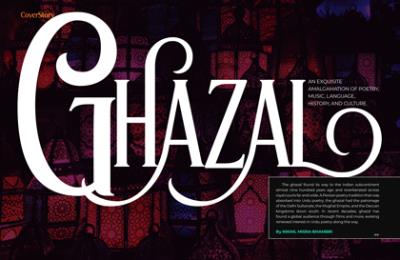
The ghazal found its way to the Indian subcontinent almost nine hundred years ago and reverberated across royal courts far and wide. A Persian poetry tradition that was absorbed into Urdu poetry, the ghazal had the patronage of the Delhi Sultanate, the Mughal Empire, and the Deccan kingdoms down south. In recent decades, ghazal has found a global audience through films and more, evoking renewed interest in Urdu poetry along the way.
The Mughal emperor sat proudly on his gilded throne adorned with diamonds and precious stones. Steps led up to the throne, suggesting and symbolizing that the emperor is closer to heaven than to earth. In this court, designed to mirror paradise on earth, poets took turns reciting elegant verses. Mesmerized by eloquence of the poets and their intoxicating rhymes, attendees exclaimed “waah, waah” with amazement. Sometimes, the audience was moved to spontaneously join the recitals. This tradition, known as mushaira (poetic symposium), was a hallmark of the royal courts of the Indian subcontinent.
My exposure to ghazals began during my annual childhood trips to New Delhi. My grandmother was a passionate ghazal singer who sang on All India Radio. Her daily riyaaz (practice sessions) with Ustad Iqbal Ahmed Khan, an exponent of the Delhi Gharana style of Indian classical music, are my fondest memories of visiting India.
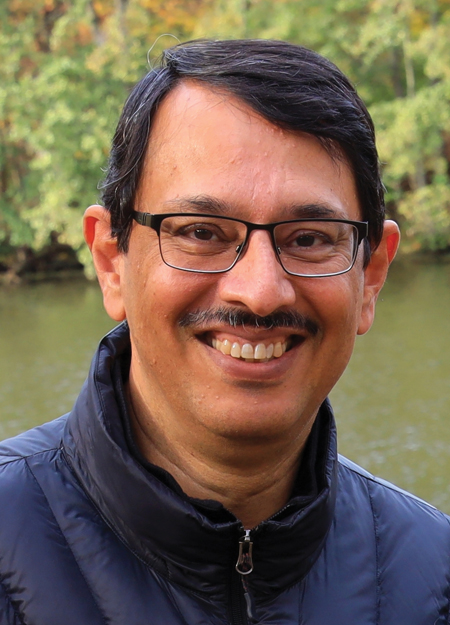
Although I did not understand the words, I was mesmerized by the melodious, poetic sounds of Urdu sung to the accompaniment of tabla and harmonium.
In my late 20s, I experienced a sort of cultural reawakening. The distant sounds of my grandmother’s ghazals echoed in my mind. It ignited my journey into a couple of thousands of years of history, religion, poetry, politics, and music surrounding it.
To understand how it all started, I spoke with Dr. Ali Minai, the great-grandson of the poet Aamir Minai, and a nephew of Talat Mahmood, the famous Bollywood singer. Dr. Minai, a professor of Electrical Engineering & Computer Science at the University of Cincinnati, Ohio, proudly continues his family lineage of Urdu poetry, and his works have been featured in several books.
[Right] Read what Dr. Ali Minai, the great-grandson of the poet Aamir Minai, has to say what about the origins of ghazal.
The ghazal is born
Dr. Minai says, “The Persian ghazal, which became popular in India, originated from a genre called qasida. This is a poem written in praise of, usually, a noble or a ruler. A Persian qasida is very long and always begins with a romantic piece of poetry. In the 11th century, poet Rudaki separated the first part of the qasida, the romantic poetry, and turned it into a separate genre called the ghazal. Once Rudaki began writing ghazals, other Persian poets such as Rumi, Saadi, and Hafiz followed in his footsteps.”
A ghazal typically consists of five to fifteen independent couplets that are loosely linked together thematically. Popular themes include romance, travails of life, and divine unity. The ghazal also became a medium to take on the taboo topics of the times. Minai explains, “In Muslim society, most people were very careful to never say anything blasphemous. Urdu poetry became a vehicle for expressing ideas that no one in society was otherwise allowed to express.” To Minai’s point, S. M. Shahed, a retired Honeywell engineer who started UrduShahkar.org, says, “Tracing back to Persia, the favorite target for many poets has always been the mullah or the supreme religious authority.”
Minai says, “Ghazals first arrived around 1175 in South Asia when Mahmud of Ghazni, the first Muslim ruler captured Punjab. Besides being a skilled conqueror and plunderer, Mahmud was one of the greatest patrons of literature in the history of Islamic civilization. His capital in Ghazni had the best Persian poets.” Ghazals became popular under the reign of the Delhi Sultanate that ruled from 1206 to 1526 from its capital in Delhi.
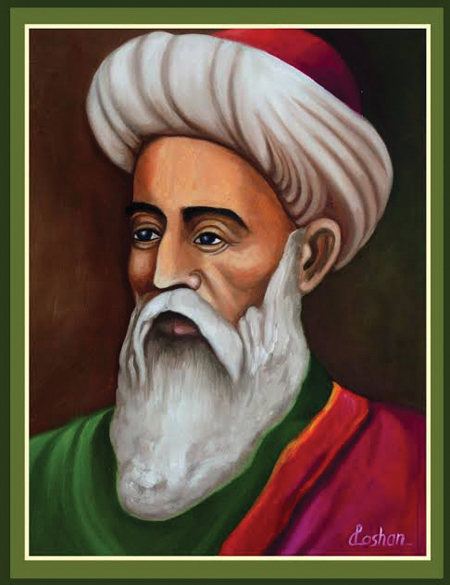 Amir Khusrau: the “Father of Urdu Literature”
Amir Khusrau: the “Father of Urdu Literature”
One of the most influential figures of the Delhi Sultanate was Amir Khusrau (1253-1325), a musician, poet, and scholar. Minai states, “Khusrau, who mostly wrote Persian ghazals, was certainly the greatest ghazal poet in India.” His vast contributions to the world of Hindustani music have earned him the titles ‘Voice of India,’ ‘Tuti-e- Hind’ (‘Parrot of India’), and ‘Father of Urdu Literature.’”
To learn more about Khusrau, I spoke with Vusat Khan, Ustad Iqbal Ahmed Khan’s daughter. Following her father’s passing in 2019, Khan has taken on the mantle as the next exponent of the Delhi Gharana which was founded by Khusrau in the 13th century. According to Khan, “Khusrau initially wrote in Persian. Then, Nizamuddin Auliya, his Sufi master, told him, ‘People in India do not understand Persian. You should write in the layperson’s language.’ Thus, Khusrau traveled around the subcontinent and learned the regional traditions, ultimately writing songs in local dialect which he referred to as Hindvi.”
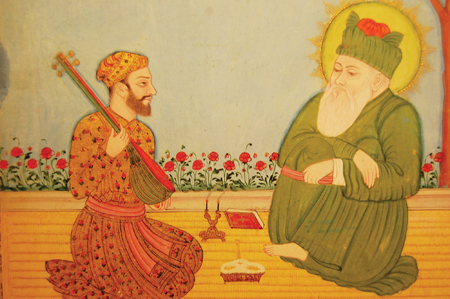
Amir Khusrau's vast
contributions to the world
of Hindustani music
earned him the titles “Voice
of India,” “Tuti-e-Hind”
“Parrot of India,” and
“Father of Urdu Literature”
(Photo: bits.poetry.blog)
Most of Khusrau’s compositions were Sufi Kalams (devotional songs) written out of his love for his peer (spiritual guide), Nizamuddin Auliya. Khan explains, “Sufis perceive their peer as their link to God, as God has no form. For us, God is everywhere. There is no duality.” Thus, in his poetry, Khusrau expresses his love for his peer in the same way as a man expresses his love for a woman.
One of Khusrau’s most famous ghazals is “Zehaal-e-Miskeen” (“The Plight of the Poor”). Khan says, “This is a beautiful amalgamation of Persian and Urdu. One line is in Persian and the other is in Urdu. ‘Miskeen’ does not literally mean poor. Rather it refers to a helpless lover. The first line means ‘I am so in love with you [Nizamuddin Auliya], do not make fun of my condition. The people around me will make fun of it.’” This kind of thought and feeling often pervades ghazals.
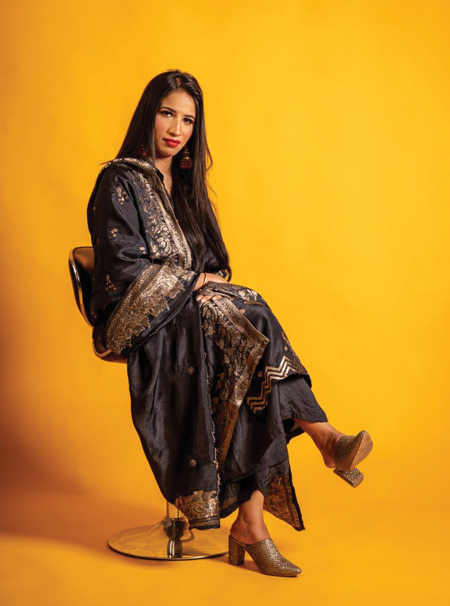
Akbar the Great, who ruled at the pinnacle of the Mughal Empire, was an aficionado of poetry and literature. Some of the greatest Persian poets, such as Urfi, Naziri, and Zohouri, arrived in India during his reign. The first great poet after Amir Khusrau was Faizi, one of the famous “navratan” in Akbar’s court.
In the 15th century, five Deccan kingdoms became independent. Minai explains, “Golconda (modern-day Hyderabad) and Ahmednagar were great patrons of Urdu poetry. Quli Qutub Shah, a ruler of Golconda, wrote one of the first established Urdu ghazals. He used the language Dakhni, a variant of Urdu, with unique words and grammar.” In 1700, when the poet Wali Mohammed Wali visited Delhi, the court’s Persian poets were impressed with his simple, melodious poems. This visit, hence, stimulated the growth of Urdu ghazals in North India.
[Left] Vusat Khan, an exponent of Delhi Gharana says, “Sufis perceive their peer as their link to God, as God has no form. For us, God is everywhere. There is no duality.” Thus, in his poetry, Amir Khusrau expresses his love for his peer in the same way as a man expresses his love for a woman.
Mirza Ghalib: “A Scoundrel Who Lives Near God”
Mirza Ghalib was an 18th century poet in the Mughal Court under Bahadur Shah Zafar, the last Mughal Emperor. During this time, the British were strengthening their hold in North India, and Mughal territory was confined to Shahjahanabad, which we now know as Old Delhi. In the midst of the empire’s rapid decline, Zafar remained engrossed in his true love—poetry— and Ghalib was his revered mentor.
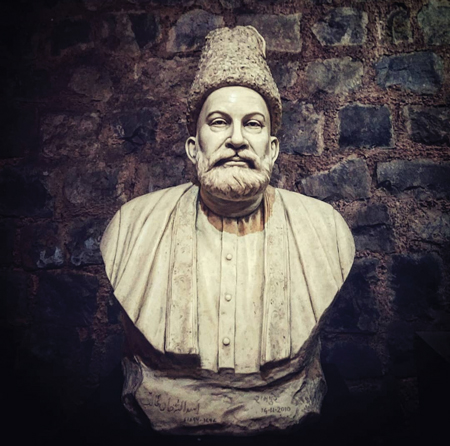
Shahed says, “Ghalib wrote extremely complex poetry at a very early age. He gave a new twist to the prevailing norms by giving multiple, layered meanings to his poetry. Some of his work has six or seven different interpretations.” According to the article “150 Years of Mirza Ghalib: How His Genius Took the Ghazal to New Heights and Depths,” published in The Wire, “He enriched Urdu poetry with [philosophical] images and symbols,” which transcended “the frivolous and superficial depiction of love.”
[Right] “150 Years of Mirza Ghalib: How His Genius Took the Ghazal to New Heights and Depths,” is the title of an article published in The Wire. (Photo: Hemant Bansal, Wikicommons).
Ghalib’s poetic appeal transcends generations. Aamir Siddiqui was born and raised in Mumbai, and is now in his mid-30s. Since his childhood, Siddiqui has been exposed to several poets, none of whom have left a stronger impact than Ghalib. Siddiqui finds Ghalib’s authenticity unparalleled. He says, “The purest form of art comes from hardship. Ghalib’s work is especially touching because he had such a challenging life filled with ups and downs. The best form of art is when you express your true feelings from your own experiences. Basically, Ghalib is not faking it.”
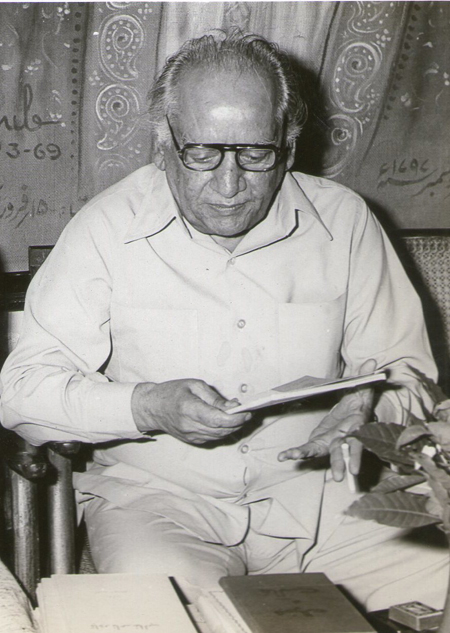
The Indian Express article “Mirza Ghalib: A Scoundrel Who Lives Near God,” mentions that Ghalib was a free-spirited non-conformist who looked upon the formal structure of religion and traditions with disdain. His ghazal “Bazeecha-e- Atfal” (“Child’s Playground”) reflects Ghalib’s religious skepticism. A translation of Diwan-e-Ghalib translates the line “Imaan mujhe roke hai jo kheenche hai mujhe kufr / Qaaba mere peechhe hai kalisa mere aage” as “Faith stops me, but I am drawn to disbelief. Qaaba is behind me, and the church/temple is before me.”
[Left] Faiz Ahmed Faiz had a knack for using
Urdu poetry as a weapon in the struggle
for independence from the British rule. He
employed elegant, emotional symbolism to
stir up freedom fighters. One such example
is "Jis Dhaj Se Koi Maqtal Mein Gaya Woh
Shaan Salamat Rehti Hai” (“It is your gait as
you stride to the gallows that will be recalled
with enduring grace”).
The role of Urdu poetry during the independence movement
Minai observes, “Urdu poetry assumed a political, revolutionary sentiment around the independence movement.” The Progressive Writers’ Movement, founded in 1932, was dedicated to using the pen to combat injustice. Shahed states, “The members were initially united around opposition to the British government.” They were left-leaning, and their works advocated human equality and attacked social injustice.
One of the leading members of the Progressive Writers’ Movement in Pakistan was Faiz Ahmad Faiz. Estelle Dryland writes in her article “Faiz Ahmed Faiz and the Rawalpindi Conspiracy Case,” “[Faiz] had a knack for employing elegant, emotional symbolism and ambiguity to mask political innuendo.” Shahed adds “In many of Faiz’s ghazals, you have to interpret the beloved to mean the country, the homeland.”
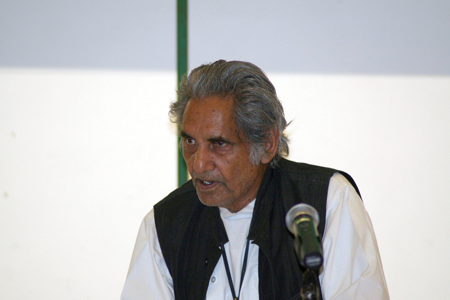
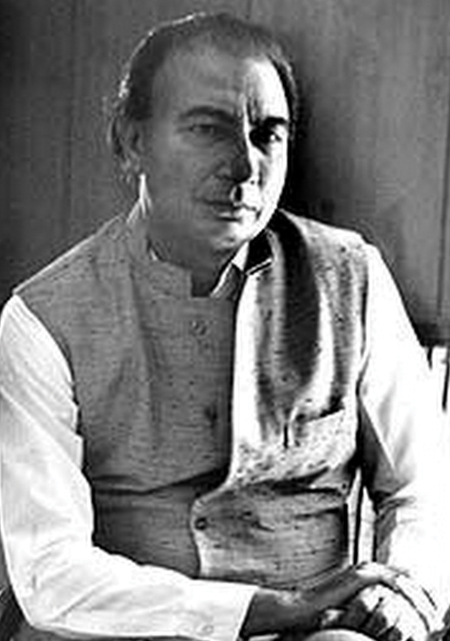
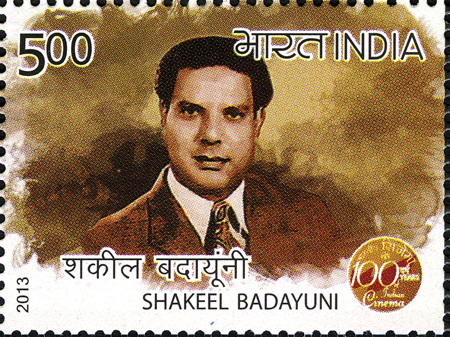
Shayars like Gopaldas Neeraj [Top right] , Sahir Ludhianvi [Left] , and Shakeel Badayuni [Bottom right] were some of the luminaries who helped sustain interest in Urdu through their inspired songs in Bollywood movies.
One of Faiz’s most famous ghazals, “Aaye Kuch Abr,” was written during his incarceration on the charge of igniting a coup that came to be known as the Rawalpindi Conspiracy. Isolated from his family and misunderstood by society, Faiz penned this ghazal which reflects a beacon of hope he carried in his mind. The first two lines “Aaye kuchh abr kuchh sharaab aaye / Uske baad aaye jo aazaab aaye,” mean “Let some cloudy weather come and also some wine to relish in this weather / After this let whatever punishment come.”
Following years of imprisonment, Faiz fled to the Soviet Union. In 1962, he became the first Asian poet to receive the Lenin Peace Prize, which was historically granted to prominent communists and supporters of what was then the U.S.S.R.
I spoke with Naresh Gujral, a political leader and son of former Indian Prime Minister I. K. Gujral. Faiz was I. K. Gujral’s English professor at Lahore University. Naresh says, “Both my father and my uncle (Satish Gujral, the famous artist) developed a deep love of Urdu poetry due to him. Faiz would always write out and explain his poetry to Satish, who was deaf.”
“One poem that both my father and I love is ‘Jis Dhaj Se Koi Maqtal Mein Gaya Woh Shaan Salamat Rehti Hai’ (‘It is your gait as you stride to the gallows that will be recalled with enduring grace’). My father always said that if you are in politics, follow this poem’s meaning. Remain fearless and steadfast in your beliefs without compromising.”
Ghazals in Bollywood
From the 1930s till the 1980s, ghazal music was one of the dominant styles in Bollywood. Shahed says, “The film industry sustained Urdu in India. Early songwriters such as Gopaldas Neeraj, Sahir Ludhianvi, and Shakeel Badayuni were all shayars.”
Talat Mahmood is regarded as one of the pioneers of ghazal singing in films. Referred to as the “Frank Sinatra of India,” Mahmood sang 747 songs in 12 Indian languages. Known for singing soft, somber ghazals in a silky voice filled with emotion, he helped shape the style of modern ghazal singing. Minai says, “He was by far the best in terms of popular-style ghazals.”
Mehdi Hassan of Pakistan is credited with bringing ghazal singing to a worldwide audience. On his death in 2012, The Indian Express article “Ghazal King Mehdi Hassan Passes Away” mentions, “[the international popularity of Hassan’s music allowed him to play] the important role of a cultural ambassador between India and Pakistan.” The Hindustan Times article “A Tribute to Ghazal Maestro Mehdi Hassan” says that Hassan “played upon the mood of the music rather than classical nuances. He had a flair for using the raagas best suited to the ghazal’s appeal.” The Indian Express article adds, “There was a time in Pakistan’s film industry when a film was not complete without Hassan’s voice.”
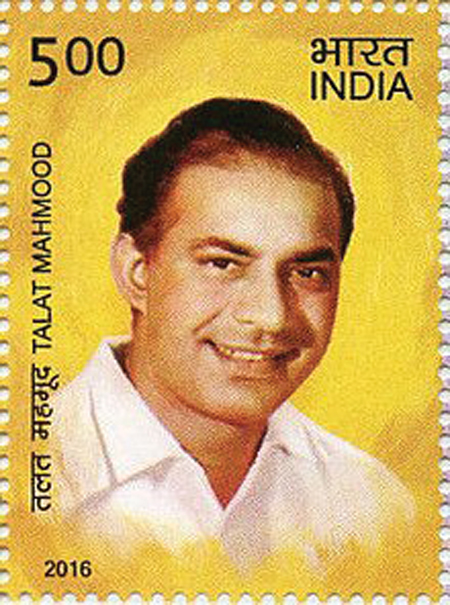
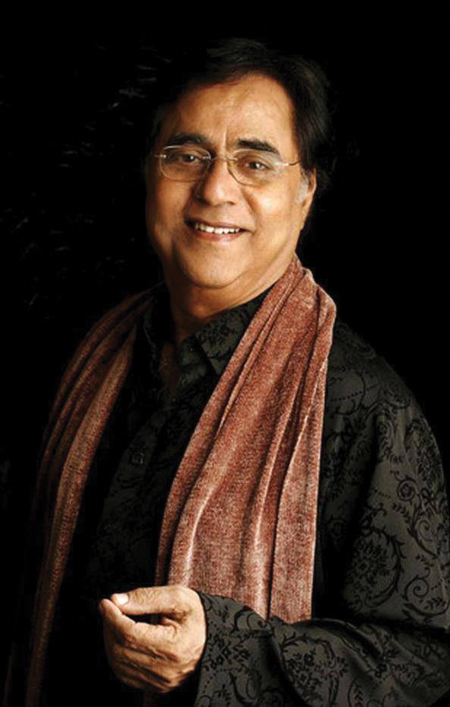
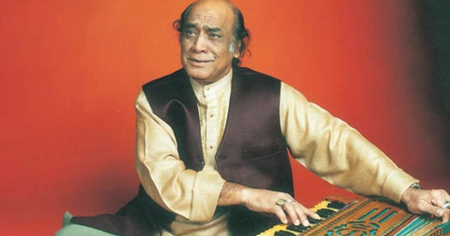
Ghazal singers like Talat Mahmood [T0p left] , Mehdi Hassan [Bottom] , and Jagjit Singh [Top right] have legions of fans because of their their ability to transform Urdu poetry to haunting melodies hummed by millions.
The most famous ghazal singer from the 1970s till his death was Jagjit Singh. According to The Hindu’s piece “Jagjit Singh the Singer Who Made Ghazals Accessible,” “His versatility, [and] ability to move beyond the traditional format with innovative orchestration” largely popularized the genre. Singh’s musical career took off following his marriage to Chitra Dutt, and the two formed a musical duo. Their first LP record “The Unforgettable,” released in 1977, was described by The Independent as “groundbreaking” and “transformative, before and after milestone in the history of Indian popular and ghazal music.” Singh’s fame further increased once he began composing ghazals for films. They included “Hothon Se Chhu Lo Tum” (Prem Geet), “Tum Itna Jo Muskura Rahe Ho” (Arth), “Hoshwalon Ko Khabar Kya” (Sarfarosh), and “Koi Fariyaad” (Tum Bin).
In the 1980s, changing trends resulted in the decline of the popularity of ghazals in popular entertainment. The Hindustan Times article “Why Have Ghazals Faded Out in Bollywood?” observes that most of today’s films are “fast-paced and inclined towards action, and ghazals do not fit in their scheme of things.” Thus, “new filmmakers [simply] copy Western music and feel that they have made a song.”
Vusat Khan blames the decline of traditional musical forms on the government. She says, “There is no patronage from the state. Historically, my family served as court musicians in the Mughal Court, and that patronage helped us survive. When the British arrived, everything changed. The Delhi Gharana has tried organizing festivals and lobbying to revive classical music, but we have not been successful thus far. Ironically, this kind of music is appreciated more in the West than in our own country. Many famous classical artists such as Ravi Shankar and Zakir Hussain only became famous when they moved to the West.”
Contemporary efforts for the revival of Urdu
Sanjiv Saraf has pioneered a new chapter in reviving the glory of Urdu poetry. In 2012, he founded Rekhta Foundation, a public charitable trust which promotes Urdu language, literature, and culture. An IIT Kharagpur graduate, Saraf founded Polyplex Corporation, a multinational business in polyester films, in 1984. However, despite his success, his passion for Urdu poetry never left him. He wrote in an email interview, “I stepped back from business to focus on learning Urdu. In the process, I realized [that whatever] was available was incomplete, non-credible, and mostly in Urdu script.” Today, Rekhta.org has digitalized more than 90,000 e-books and preserved 41,017 ghazals, 4,455 poet’s biographies, and 7,852 nazms. All work is available in Urdu, Devanagari, and the Roman script.

Other initiatives include Jashn-E-Rekhta, an annual Urdu cultural festival; Aamozish.com which provides Urdu language lessons; an online seller of Urdu books; and Sufinama, which preserves works of Sufi writing and philosophy.
[Right] Sanjiv Saraf pioneered a new chapter in reviving the glory of Urdu poetry when he founded Rekhta Foundation, a public charitable trust which promotes Urdu language, literature, and culture.
The Economic Times article “For Sanjiv Saraf, Rescuing Urdu From Neglect and Popularizing It is his Life’s Mission” states, “That the younger generation has an interest in Urdu [is] a revelation. For the first time in years, there is now an understanding that the reason behind the death of the language was the lack of patronage and not the want for an audience.”
According to Justice Markandey Katju, India’s two defining languages, Urdu and Sanskrit, are both neglected. “Urdu used to be the common language of all educated people until 1947. The revival of Urdu is as important as that of Sanskrit. Urdu was the language of free thinkers.”
Nikhil Misra-Bhambri is a freelance journalist living in Los Angeles, California. He graduated in history from the University of Southern California (USC) and writes about relationships between cultures, cuisine, music, and history.
Enjoyed reading Khabar magazine? Subscribe to Khabar and get a full digital copy of this Indian-American community magazine.
blog comments powered by Disqus










